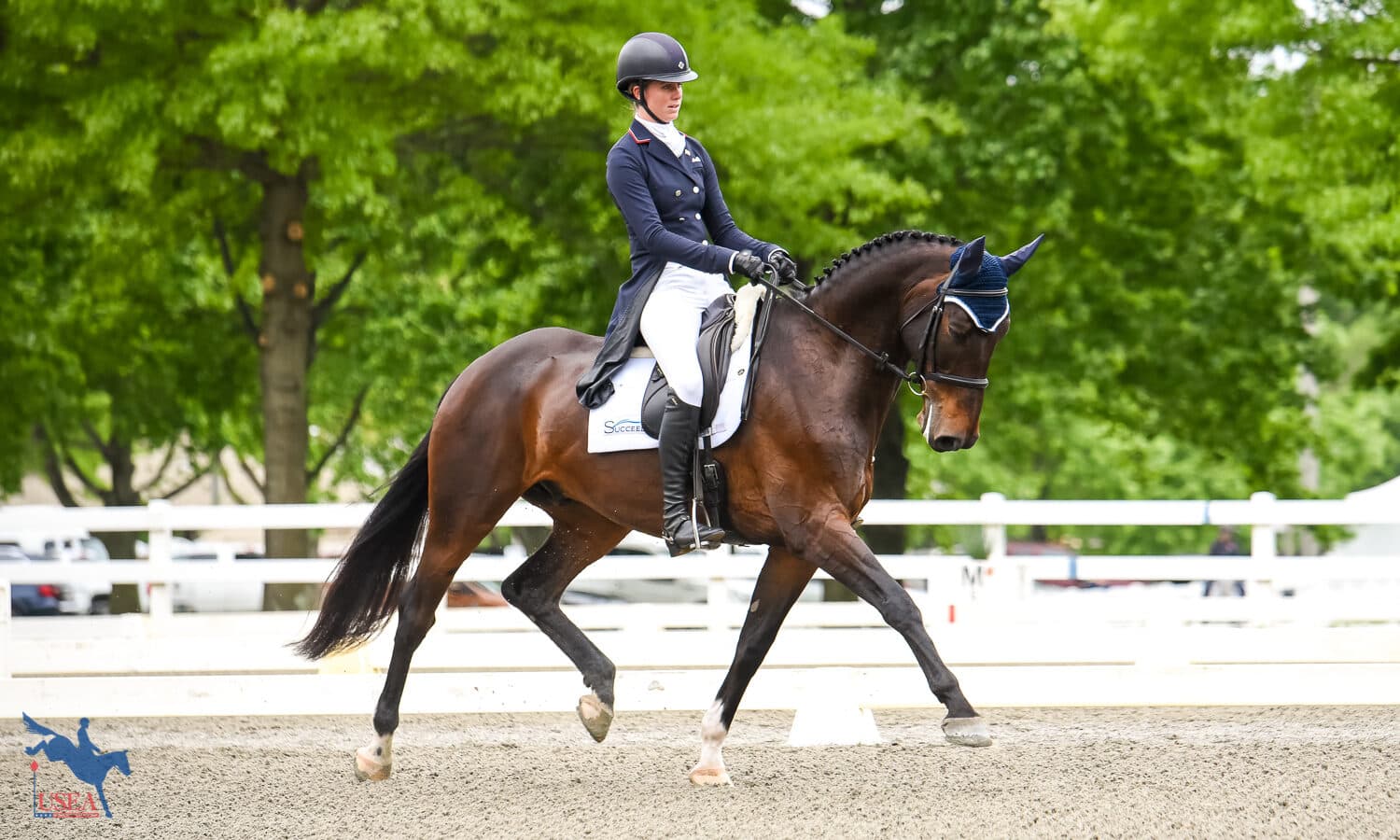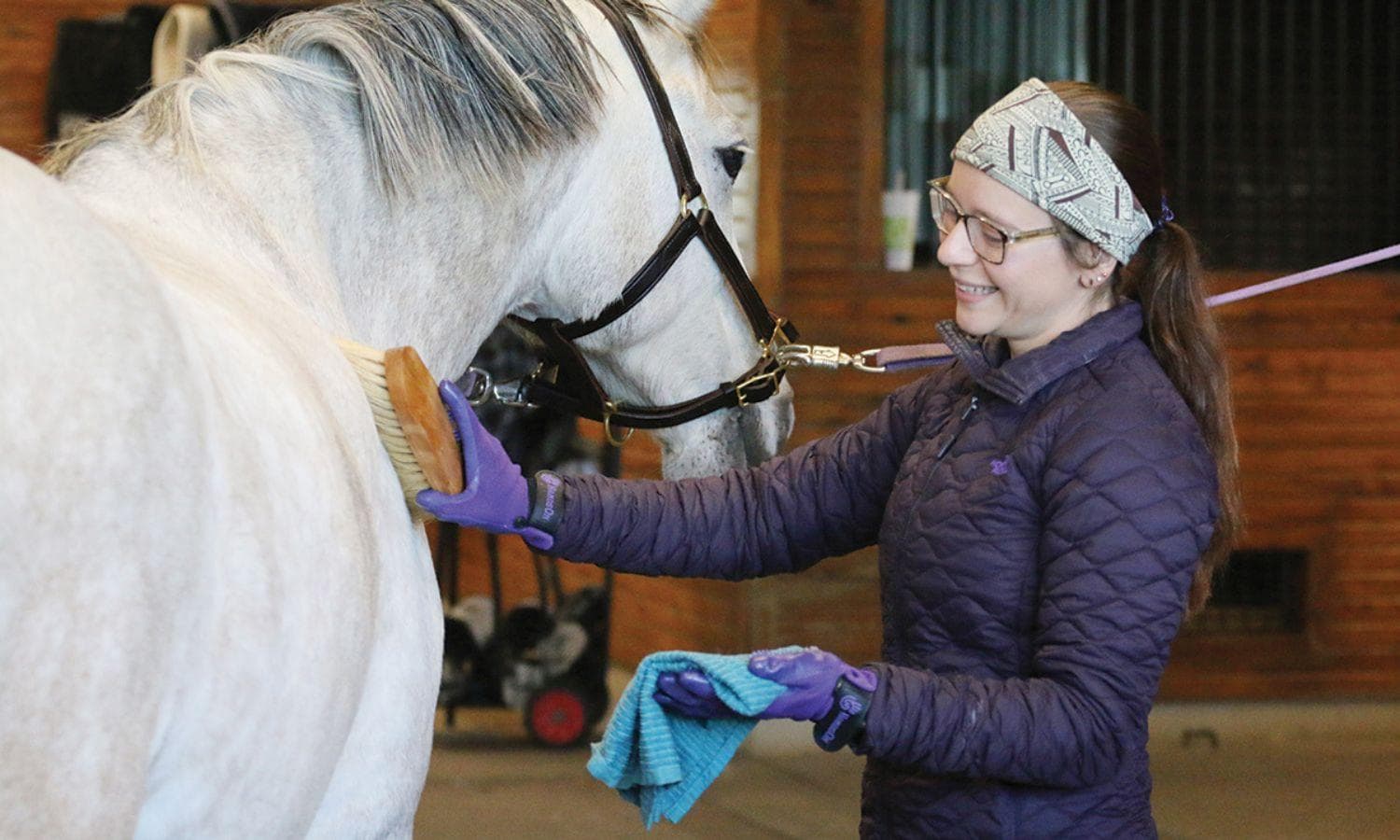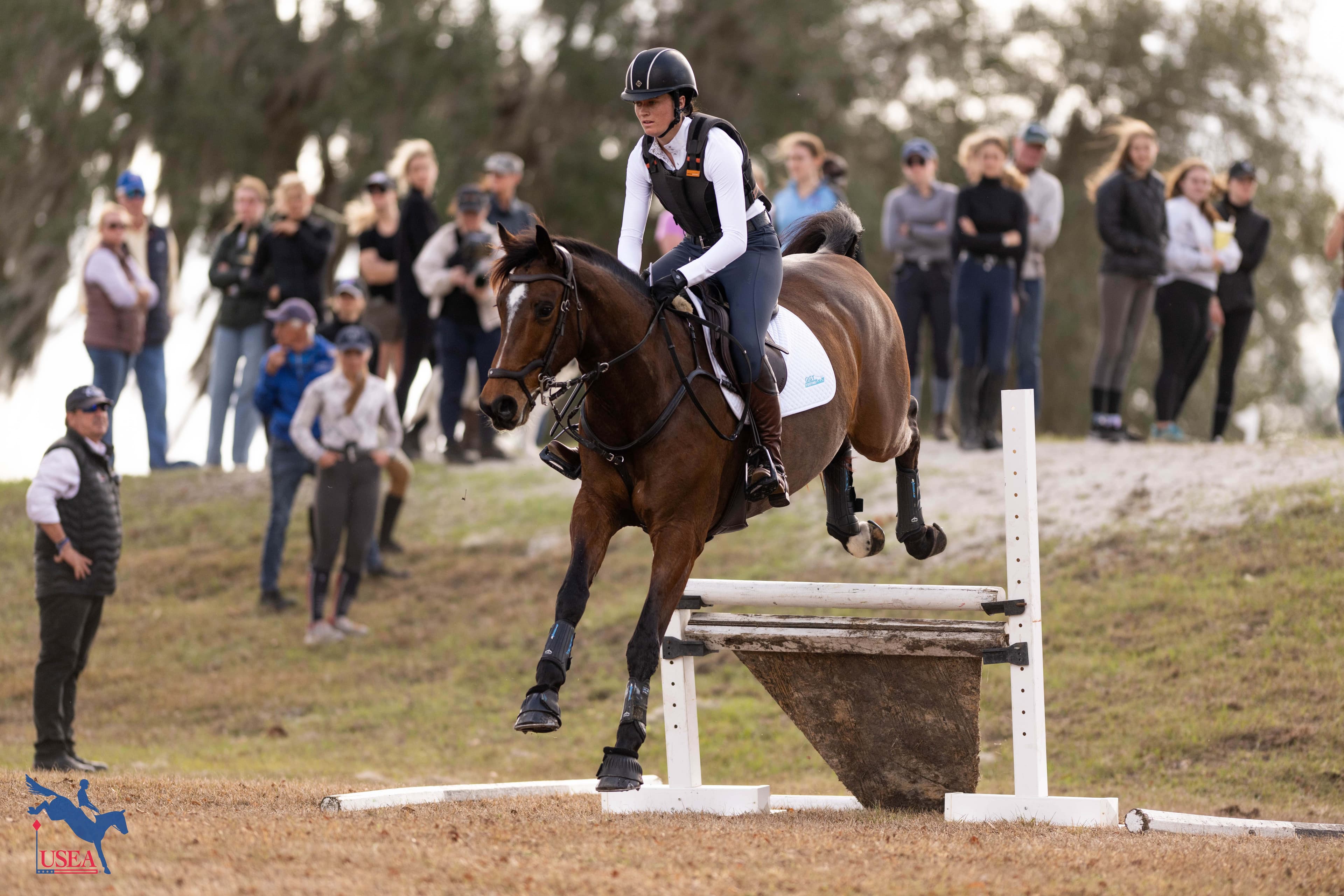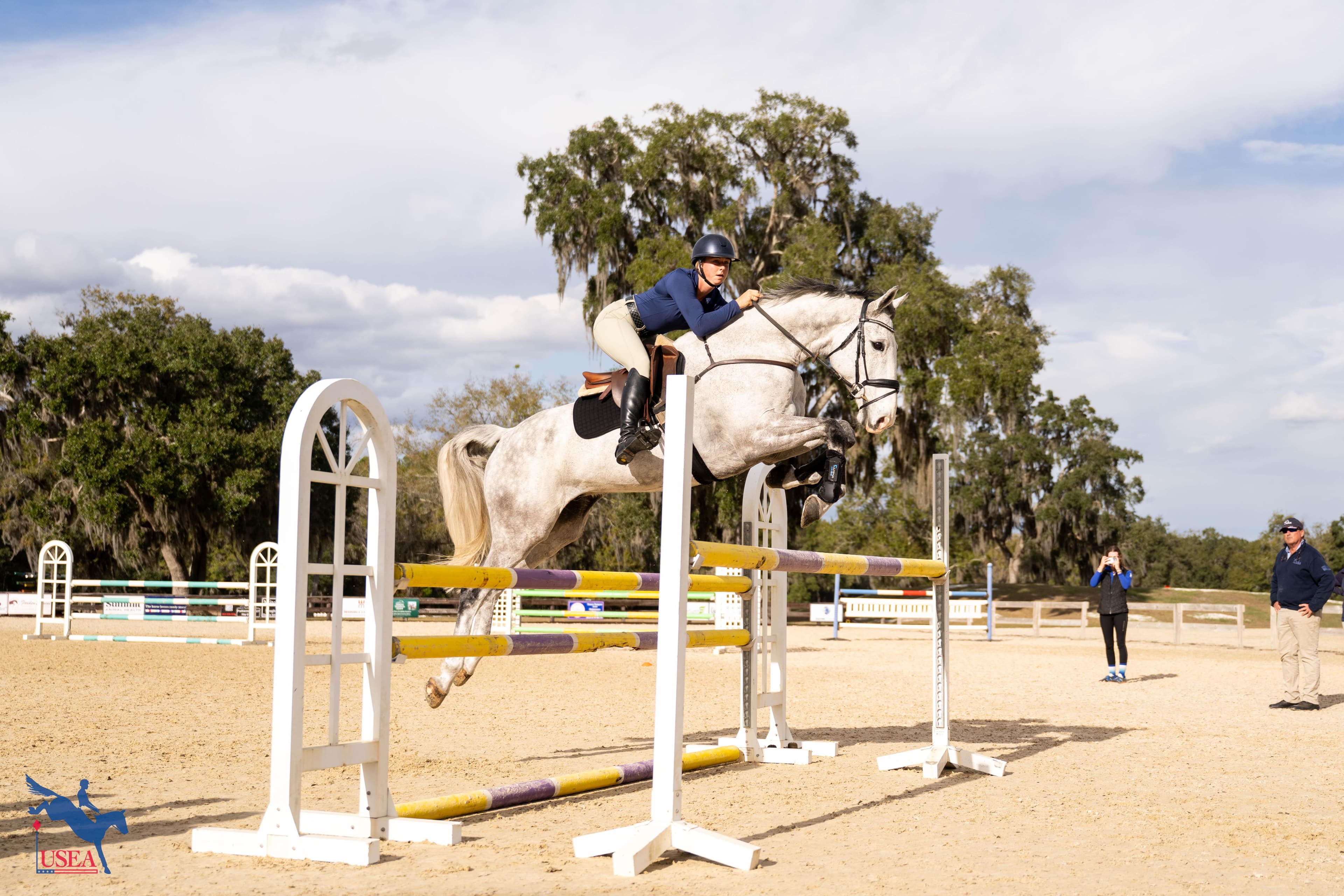Rule Refresher: The Dressage Test

The dressage test is the first of the three phases in eventing. Intended to demonstrate "the harmonious development of the physique and ability of the horse," the dressage test contains a prescribed list of movements to be carried out in front of a judge, or judges, and which is then given a penalty score that horse and rider carry through to the end of the competition.
To help you perform your best dressage test, we have reviewed the rules specific to the dressage test. Text has been taken directly from the USEF Rules for Eventing with emphasis added by the USEA.
EV133 Dressage Test
1. The object of Dressage is the harmonious development of the physique and ability of the horse. As a result, it makes the horse calm, supple, loose, and flexible, but also confident, attentive, and keen, thus achieving perfect understanding with his rider.
2. These qualities are revealed by:
a. The freedom and regularity of the paces;
b. The harmony, lightness, and ease of movements;
c. The lightness of the forehand and the engagement of the hindquarters, originating in a lively impulsion;
d. The acceptance of the bridle, with submissiveness throughout and without any tenseness or resistance.
3. The dressage tests to be used each year will be printed in Appendix 2. From these tests, Organizers are free to select the specific tests to be used for their competition. The test to be used must be printed in the prize list for the competition.
EV134 Dressage Rules
1. In any circumstances not specifically covered by these rules, the “FEI Rules for Dressage Events” will apply.
2. All tests must be carried out from memory, and all movements must follow in the order laid down in the test.
3. After the signal has been given, the Competitor must enter the arena at A within 45 seconds.
4. A test begins with the entry at A and ends after the salute at the end of the test, as soon as the horse moves forward. Any incidents before the beginning or after the end of the test have no effect on the marks. The competitor should leave the arena in the way prescribed in the text of the test.
5. Competitors must take the reins in one hand at the salute. Gentlemen are not required to remove their hats at the salute.
6. When a movement must be carried out at a certain point of the arena, it should be done at the moment when the competitor’s body is above this point.
7. The use of the voice in any way whatsoever or clicking the tongue once or repeatedly is a serious fault involving the deduction of at least two marks from those that would otherwise have been awarded for the movement where this occurred.
8. In case of marked lameness, the judge at C, after consultation with the other judge(s) if appropriate, will inform the competitor that he is eliminated. There is no appeal against this decision.
9. A horse leaving the arena completely, with all four feet, between the time of entry and the final salute, will be eliminated.
10. Any resistance that prevents the continuation of the test longer than 20 seconds will be punished by elimination.
11. When a competitor makes an “error of course” (takes the wrong turn, omits a movement, etc.) the judge at C warns him by sounding the bell. The judge shows him, if necessary, the point at which he must take up the test again and the next movement to be executed, then leaves him to continue by himself. However, in some cases when, although the competitor makes an “error of course”, the sounding of the bell would unnecessarily impede the fluency of the performance (for instance if a competitor makes a transition at V instead of K), it is up to the judge at C to decide whether to sound the bell or not. However, if the bell is not sounded at an error of test in which the movement is repeated and the error occurs again, only one error is recorded.
12. When a competitor makes an “error of the test” (trots rising instead of sitting, does not take the reins in one hand at the salute, etc.), he must be penalized as for an “error of course”.
13. In principle, a competitor is not allowed to repeat a movement of the test unless the judge at C decides on an error of course and sounds the bell. If the competitor has started the execution of a movement and tries to do the same movement again, the judge(s) must consider the first movement shown only and at the same time penalize for an error of course.
14. If there is more than one judge, unless all judges are in agreement on an error, the competitor receives the benefit of the doubt.
15. Any outside intervention by voice, signs, etc., is considered unauthorized assistance. A competitor receiving unauthorized assistance will be eliminated, at the discretion of the Ground Jury.
16. When there are two or more judges, one horse and rider, taking no part in the competition, will perform the prescribed ride in order that the judges may confer before the competition begins.
17. The judge at C may stop a test and/or allow a competitor to restart a test from the beginning or from any appropriate point in the test if, at his discretion, some unusual circumstance has occurred to interrupt a test.
18. No judge should be required to officiate longer than 8 hours in one day, and should not be required to be on the show grounds longer than 10 hours. Judges should be given at least a 45-minute lunch break and at least a 10-minute break every 2 hours.
EV135 Dressage Arena
1. The arena must be 60 meters long and 20 meters wide (Standard Arena) or 40 meters long and 20 meters wide (Small Arena), depending on the specifications for the test to be used. The measurements are for the interior of the enclosure. The arena should be separated from the public by a distance of not less than 15 meters. The enclosure itself should consist of a low fence, about 30 cm (12 inches) high. It is recommended that the entrance at A be a minimum of 2 meters and a maximum of 4 meters wide. The part of the fence at A should be easy to remove, to allow access, or may be left open. The fence should be such to prevent the horse’s hooves from entering.
2. The letters should be placed outside the enclosure, about 50 cm (20 inches) from the fence. The letter A should be a sufficient distance from the entrance to allow unobstructed entry. It is desirable to place a special marker on the fence itself, level with and in addition to the letter concerned.
3. The center line and the points along the center line, if described in the test to be used, should be clearly marked, without being of a nature to frighten the horses. On that account, it is recommended: to mow the center line shorter on a grass arena, or to roll or rake the center line on a sand arena. The points D, L, X, I and G, should be similarly mowed, rolled or raked, about 2 meters (6’6”) straight across the center line.
4. If there is only one judge, he is placed 5 meters (16 feet) from the end of the arena opposite the letter C. When two judges are used, one (the President) is placed at C and the other is placed 5 meters from the side of the arena, opposite the letter E or B. When three judges are used, one (the President) is placed at C, another (M or H) is placed at the end of the arena on a line with the judge at C, to his left or right, 2.5 meters in from the long side of the arena, and the third judge is placed 5 meters from the side of the arena, opposite either E or B. A separate enclosure (tent, trailer) should be provided for each judge and it should be raised at least 0.5 meters (20 inches) above the ground to give the judge a good view of the arena.
5. For diagrams of Standard and Small Arenas, see Appendix 5.
Want to catch up on past rule refreshers? Visit the links below:
- Rule Refresher: Are You Entered in the Correct Division?
- Rule Refresher: Entering Events
- Rule Refresher: Exercise and Warm-Up
- Rule Refresher: Accidents and Injuries
- Rule Refresher: Dress, Equipment Edition
- Rule Refresher: Dress, Attire Edition
- Rule Refresher: Saddlery
- Rule Refresher: Disqualification
- Rule Refresher: Am I Qualified? (Appendix 3)
- Rule Refresher: Inquiries, Protests, and Appeals
- Rule Refresher: Mandatory Frangible Devices
- Rule Refresher: Permitted Equine Therapists
- Rule Refresher: Changes Effective December 1, 2018
- USEF Updates Rulebook with Extraordinary Rule Changes
- Rule Refresher: Qualifications for Horse Trials
- Rule Refresher: FEI Rule Changes for 2019
- Rule Refresher: Rules for Eventing Tests
- Rule Refresher: Introduction to Horse Trials














